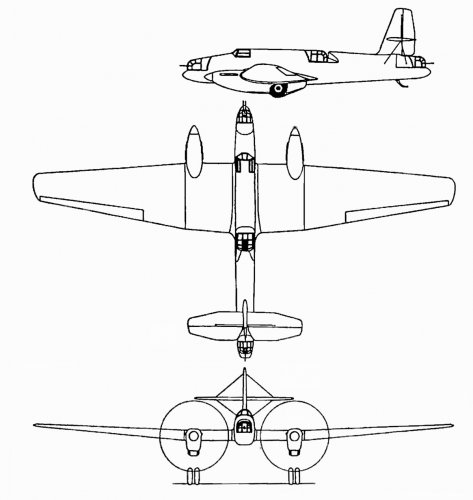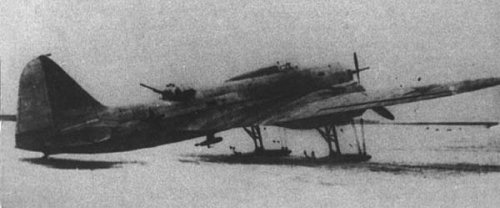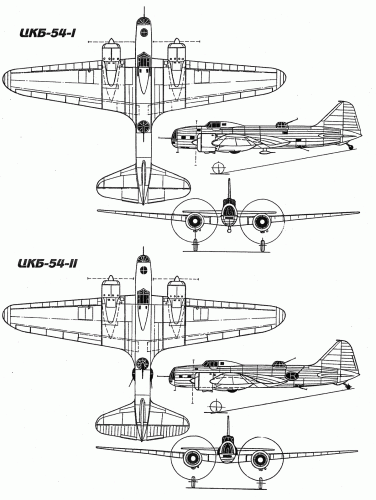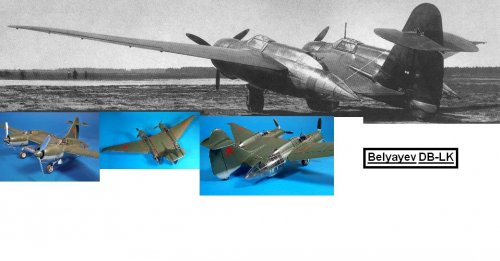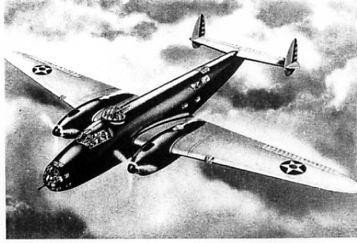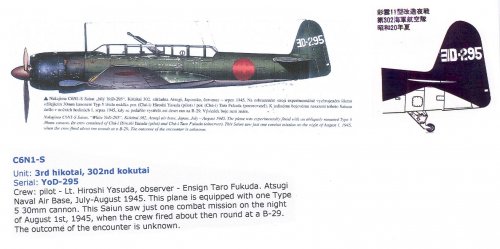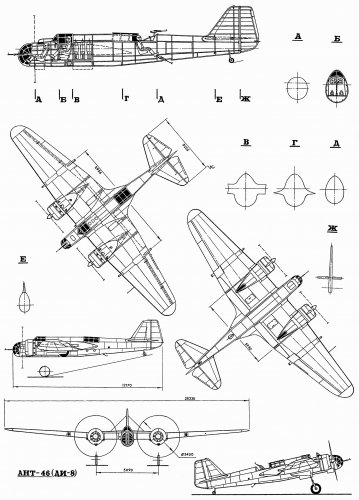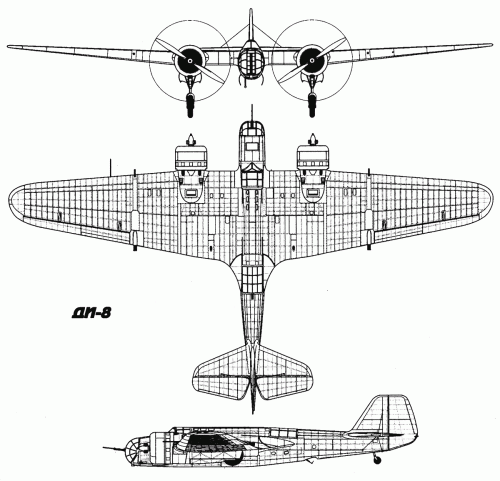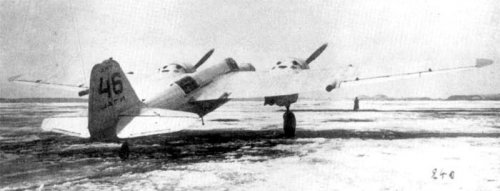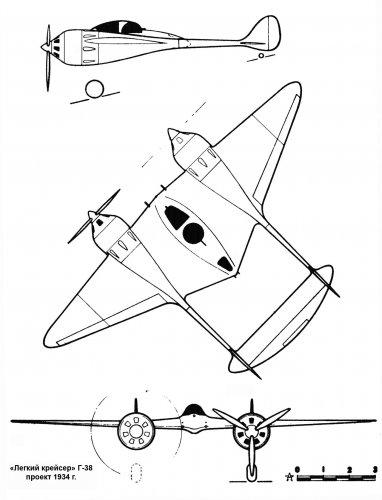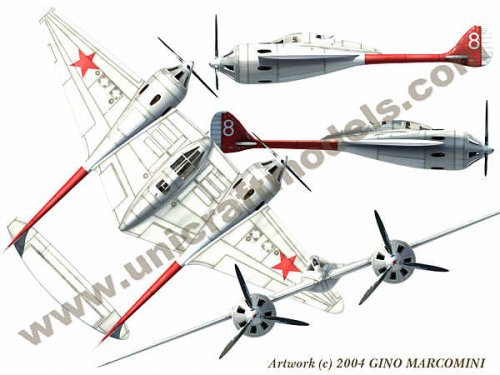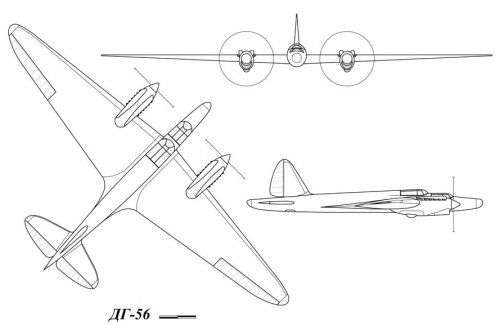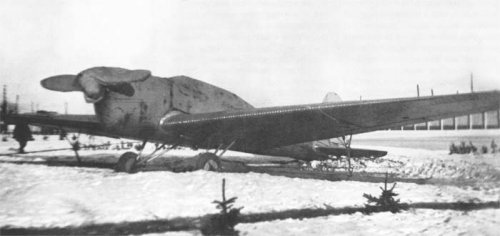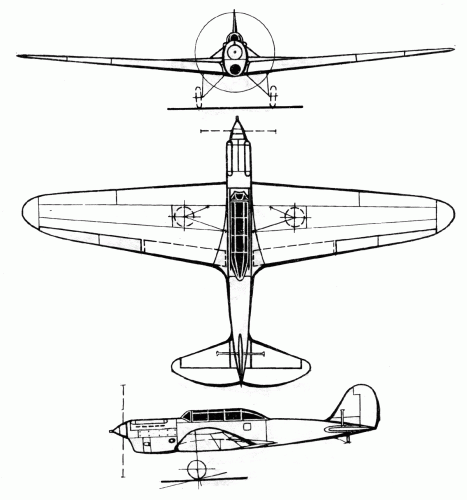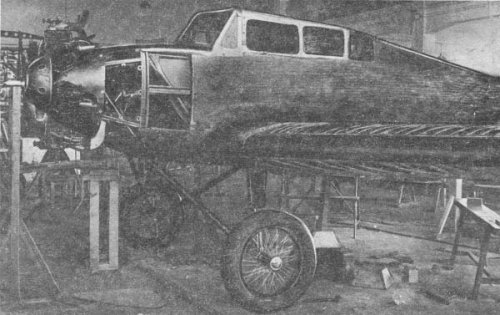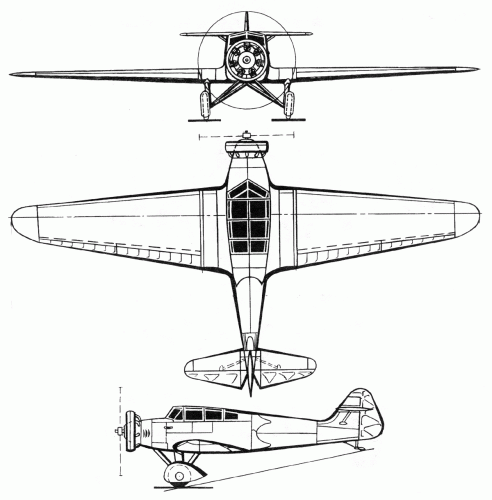Some additions - more Soviet cruisers!
The last from Tupolev's line -
ANT-46 / DI-8, an unlucky brother of legendary SB (ANT-40) bomber. Yes, it was really a three-seat "cruiser", not a two-seat fighter like other aircrafts with "DI" index. In this case, "DI" doesn't mean Dvukhmestnyi Istrebitel (two-seat fighter) as usual, but Dvukhmotornyi (twin-engined) or Dalniy (long-range) Istrebitel.
The ANT-46 prototype was converted from one of the first production SB bombers, built by Zavod No.22 in Fili, near Moscow. Its main weapon was rather unusual (while not unique for Soviet alrcraft of middle 1930s, remember Grigorovich I-Z and IP-1) - two 76.2-mm (yes, 3-inch) recoilless guns named APK-4, designed by Leonid Kurchevsky. This kind of weapon seemed to be very promising at that time, but later appeared to be a big disappointment.
These guns were mounted in the wings, outside the propeller disks; amunition load for them was 15 rounds each. The twinned ShKAS machine gun from the nose turret was replaced by ShVAK - not the famous 20-mm cannon but its precursor, a 12.7-mm machine gun. A single fixed ShKAS firing forward was mounted in the starboard wing root, and two other fixed ShKASes were mounted inside each wing root to fire
backward (!). The dorsal (TUR-9) and ventral turrets were standard, each fitted with ShKAS.
Another distinctive feature of the ANT-46 was its powerplant. It is known that ANT-40 prototypes tested two types of engines: the first with Wright R-1820 radials (later license-built as M-25) was unsuccessful, the second with liquid-cooled Hispano-Suiza 12Ybrs (M-100) had much better performance and turned into mass-production SB. The ANT-46, with its basically the same airframe, was planned to test two other alternatives. First prototype was powered by two Gnome-Rhone 14K radials (which later become the M-85), and the second (so-called "Dubler", or ANT-46bis) was planned to be built with Mikulin AM-34RNF inline engines.
The first ANT-46 was built at July, 1935 and first flown at August 1, 1935 by TsAGI test pilot Mikhail Alekseev. The aircraft had some problems with stability and flight control, but they were the same that ANT-40 prototypes had - so the designers knew quite well how to solve them. But more difficulties were with the whole concpt, especially with the recoilless guns. Eventually in January, 1936 the conference of high military command decided to
stop all the works on Kurchevsky's guns due to number of inherit defects. Because of this, Alexander Arkhangelsky's team working on the DI-8 had to "re-equip" it with new-designed 20-mm ShVAK cannons. Two versions were designed: one with two cannons mounted in wing roots, other with quick-release under-fuselage battery with
FIVE ShVAK in it! But these works took a lot of time, all the dates of DI-8 delivery to the state official tests were gone, and sometimes in mid-1936 it was decided to cancel this program. The ANT-46bis with Mikulin engines remained unbuilt...
Technical data for ANT-46bis (projected):
Wing span - 20.30 m
Length - 12.24 m
Wing area - 55.70 m2
Empty weight - 4180 kg
Normal takeoff weight - 5910 kg
Maximum speed - 404 km/h
Flight range - 1800 km
Service ceiling - 9000 m
Crew - 3 to 4
Source:
http://www.airwar.ru/enc/fww2/di8.html. The drawing "di8.jpg" is by Ivnamin Sultanov, published in "Krylia Rodiny" magazine No.10-1996.

